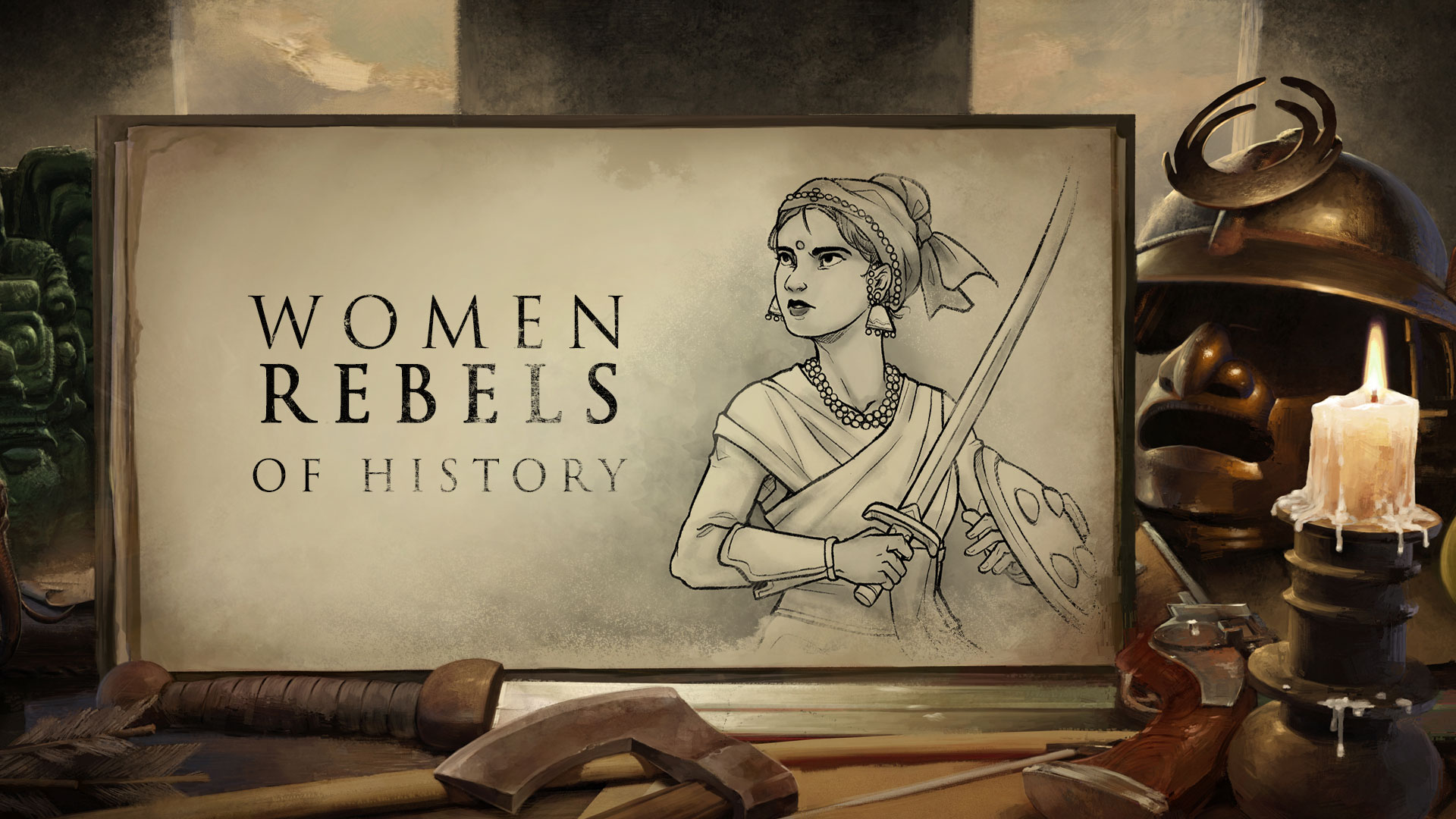
March is Women’s History Month here in the United States, which means we’ll be shining the spotlight and celebrating some of the most powerful and influential women in history all throughout the month. You’ve likely heard of some of them, learned about others in school, and will hopefully get to know others who may not have enjoyed as much prominence in the history books. Nevertheless, every one of them made their mark on the history of the world and during their lifetime!
♦ ♦ ♦
This week, we’re celebrating two powerful rebels of history: Lakshmibai, Rani of Jhansi; and Christina of Sweden!
Lakshmibai – Rani of Jhansi, India
1828 – 1858 CE
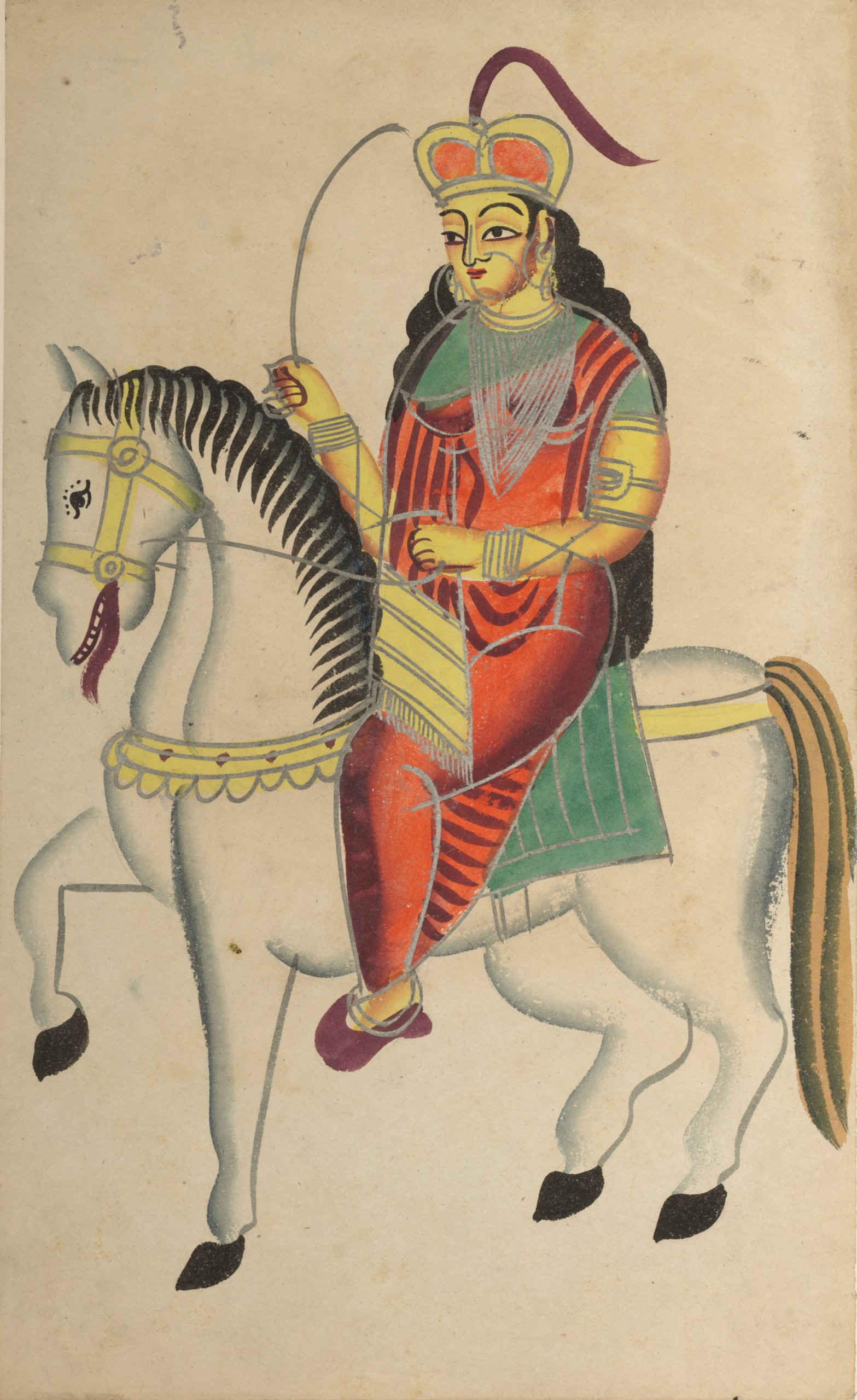
The Heroine, Rani Lakshmi Bai of Jhansi
The woman who would become known as Lakshmibai (also spelled Laxmibai) was born Manikarnika Tambe in 1828 in the city of Varanasi, located in the Uttar Pradesh state of India. Though not royal, she was raised in the household of the peshwa (ruler), Baji Rao II. Growing up in the company of boys, she was—uncharacteristic of the time—taught skills such as martial arts, sword fighting, and riding. Not much else is known of her childhood.
At just 13 years old, Marnikarnika became Rani (queen) when she was married to the 45-year-old Maharaja (king) of Jhansi, Gangakhar Rao, in 1842. In the tradition of her people, she took a new name upon her marriage: Lakshmibai, in honor of the Hindu goddess, Lakshmi.
HISTORICAL CONTEXT: Lakshmi is the goddess of wealth, fortune, love, beauty, joy, and prosperity, and is part of the holy trinity of Hindu goddesses alongside Saraswati and Parvati.
In 1851, she gave birth to a son who died tragically at only four months old. Two year later, Maharajah Gangakhar died. Only a day before his death, he adopted a son: Damodar Rao, the son of his cousin. Hindu tradition stated that a ruler with no biological heir could adopt a son, who would then gain all the personal and political rights of a biological child. Damodar Rao was to be the new heir of Jhansi.
However, the British governor-general of India, Lord Dalhousie, refused to recognize Damodar Rao as a legitimate heir. He invoked the Doctrine of Lapse: a formula he had devised to deal with questions of succession in Hindu Indian states. The doctrine asserted the paramount power’s right—in this case, the British—to approve or deny the legitimacy of these adoptions. In practice, this meant that last-minute adoptions could be rejected and the British could annex Indian states they claimed had no natural or adopted heir. Dalhousie believed Western rule was preferred over Indian rule and should be enforced wherever possible; the Doctrine of Lapse provided a means to do so.
Thus, Jhansi was annexed under British rule with an East India Company agent assigned to oversee administrative matters in the region.
HISTORICAL CONTEXT: THE EAST INDIA COMPANY: The East India Company was a British corporation established to exploit trade in East and Southeast Asia, as well as India. The company became a force in politics and acted as an agency for British imperialism in India from the early 1700’s to the mid-1800’s. Their trade monopoly was eventually broken in 1813, and from 1834, onward, it existed as a managing agency for the British governing of India. This role was removed after The First War of Indian Independence, and the company was dissolved as a legal entity in 1873.
Lakshmi, then a 25-year-old queen, refused to give up her beloved Jhansi. Though deposed by the British and offered 6,000 rupees per month as a pension, she refused the British money and instead chose to live off her dead husband’s estate. After being deposed, Lakshmibai wrote numerous petitions and appeals to both the East India Company’s Board of Directors and the British parliament, all to no avail.
In May 1857, mutiny broke out in the city of Meerut; the rebellion against British rule began to spread throughout the north and grew to what is now called The First War of Indian Independence (or The Indian Mutiny). The following month, European officers and their families in Jhansi were massacred.
There’s much historical debate about Lakshmibai’s role in their deaths. Decreeing that the Rani was involved allowed the British to paint her as a ruler after revenge. However, a letter sent to the Rani’s son in 1889 challenges these claims. The writer is a Mr. Martin, a man who says he was taken in and protected by the Rani during the massacre, along with another Englishman and an English lady. He tells Damodar Rao that his mother took no part in the massacre and, in fact, supplied the Europeans with food and reinforcements to help them.
A group of Sepoys—Indian soldiers who served under British or other European powers—sent a note to the Rani around this time demanding three lakhs (a lakh is a measure of 100,000 rupees) from her. Though she replied that she had been deposed and had no such money, they insisted that they would raze her palace and place her cousin on Jhansi’s throne if she was unable to pay. She was able to find jewelry worth around one lakh and offer it to them. They took what was offered, plundered Jahnsi’s cantonment (a permanent military station in British India), and left the kingdom.
Lakshmibai was proclaimed Jhansi’s regent, ruling on behalf of her son who was not yet of age.
Her rule of Jhansi didn’t go unchallenged, however. Her cousin raised troops and seized the fort of Karrara, declaring himself the Maharajah of Jhansi. Rani sent her own troops to reclaim Karrara, winning it back and imprisoning her cousin at the fort. The Rana of Orcha would also send 20,000 troops to conquer the Rani’s kingdom, but she hastily raised opposing forces and defeated him.
After defending against the threat of those who sought to take rule of Jhansi from her, Lakshmibai devoted herself to managing her kingdom.
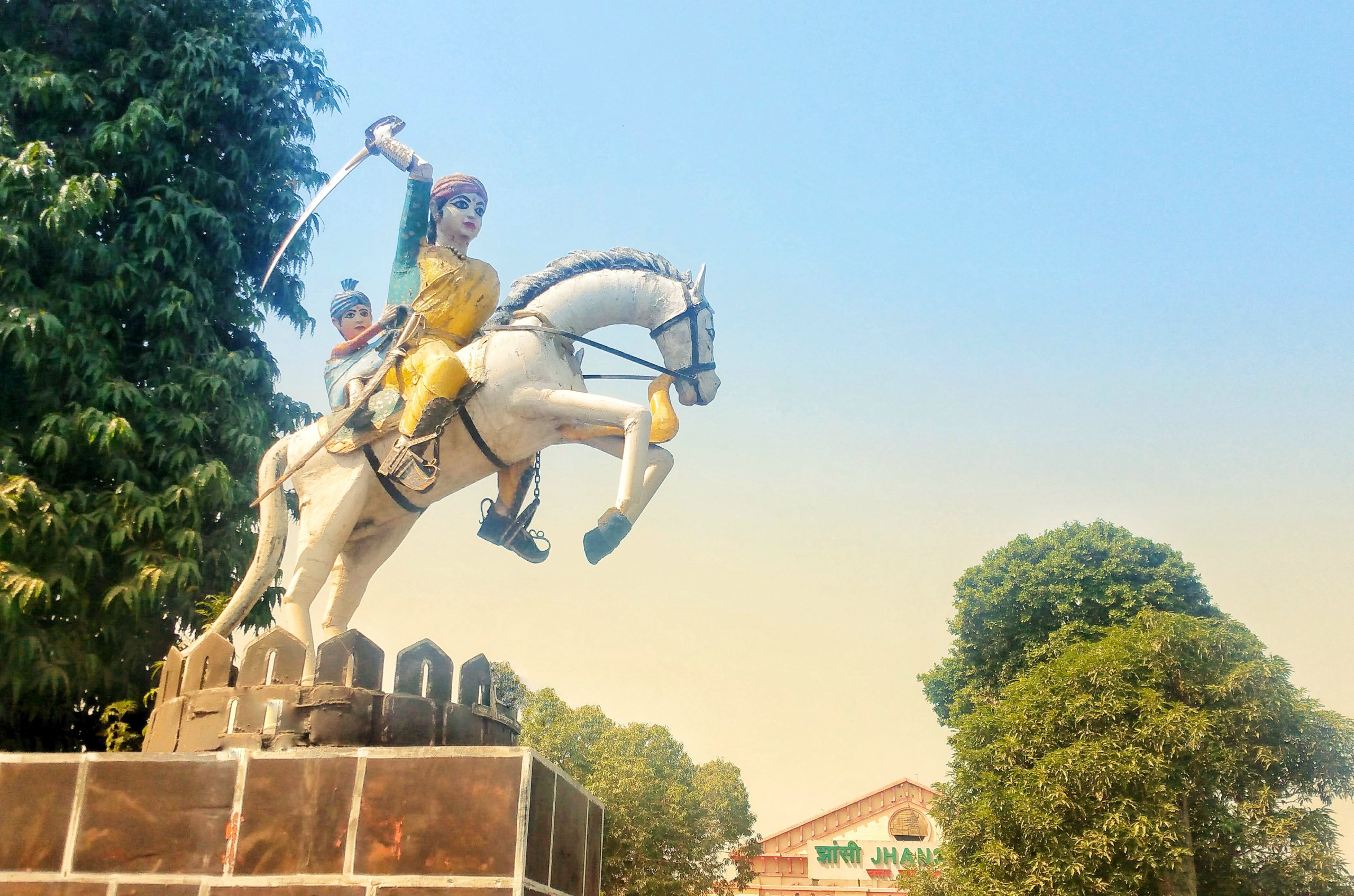
Rani Laxmi bai statue in Jhansi, Uttar Pradesh, India
Whilst she had a chief minister—Lakshamrao Bande—Lakshmibai was an educated woman and often passed written laws herself. She swiftly settled disputes and managed revenues efficiently. She was an excellent and tireless rider: choosing her troopers’ horses herself, and renowned as one of the best judges of horses in the whole of India. She hoped that her effective administration would mean that, in the end, the viceroy would allow her son to take the throne, and that Jhansi would remain under Indian rule.
With the First War of Indian Independence growing in momentum, she eventually joined the uprising against the British: quickly organizing new troops, as her husband’s small army had been disbanded after his death. She also took charge of the rebels in the region as mutineers in neighboring areas began rallying in Jhansi to support the Rani.
Led by General Hugh Rose, the East India Company forces opposing the Mutiny were also advancing their efforts, and turned towards Jhansi in March 1858. When Rose’s forces arrived in Jhansi, Lakshmibai hoped to send a group of delegates to state her case in assuming control of her kingdom—despite the British deposing her years before. However, many of the men in her counsel were angry and violent; they didn’t believe the British would listen to reason, and were prepared to die fighting. Having this upper hand, Lakshmibai was overruled and could not get a message to Rose.
Company forces surrounded the Jhansi fort and a fierce battle ensued. She sent out a call for help to Nana Sahib, another leader in the rebellion, who sent 20,000 men led by Tatya Tope. Whilst Lakshmibai’s forces vastly outnumbered Rose’s army of 1500, her army fought so poorly that they were driven back.
Sensing the imminent capture of the fort, Rani Lakshmibai escaped in the night. With her son on her back, she took off on her horse, Badaal, alongside a small group of palace guards. The fort fell the following day, and Rose could turn his sights on pursuing the queen. The Rani fled east where other rebels gathered to support her.
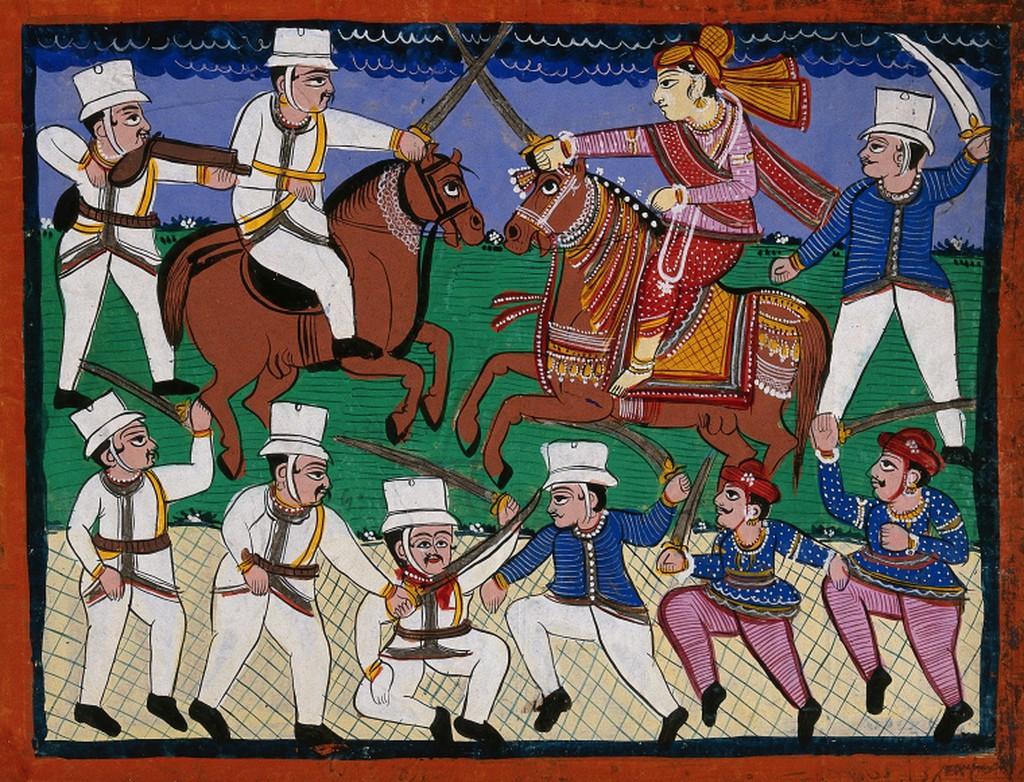
The battle of Gwalior; the Rani of Jhansi leads her troops. Gouache drawing, 1860, Unknown artist
Tatya Tope and Lakshmibai joined forces to mount a successful assault on the city fortress of Gwalior. They seized the treasury and arsenal: enriching their efforts with supplies of both wealth and weaponry. With their new momentum, Lakshmibai pleaded with Nana Sahib to distribute their treasures amongst his troops: ensuring the forces had strong generals and that they should be paid regularly. However, the Peshwa (ruler) was a religious man, and instead chose to use the funds to feed Hindu priests who flocked to Gwalior.
The discontented soldiers began to desert in large numbers. Those that chose to stay remained unpaid and without officers to offer leadership; they became more and more demoralized by the day.
From Gwalior, Lakshmibai moved east again: this time to Morar, where she would confront a British counter-attack being led by her repeated rival, General Rose. Rose’s troops had marched to the nearby cantonment where the Indian mutineers were entrenched. General Smith, another British leader, was attacking the Rani’s troops east of Gwalior around the same time.
The time had come again to fight. The Rani—dressed as a male sowar trooper—took to the battlefield. As the warfare raged, she suffered fatal injuries. Her corpse lay on the field until evening, when her attendants could come and retrieve her. She was given a full Hindu ceremony and her body was burned.
Sir Hugh Rose wrote in his general notes after her death:
“The best man on the side of the enemy was the Rani of Jhansi.”
Perhaps the greatest compliment, as noted by writer C.A. Kincaid, “praise from a hostile commander is praise indeed.”
Christina of Sweden
1626 – 1689 CE
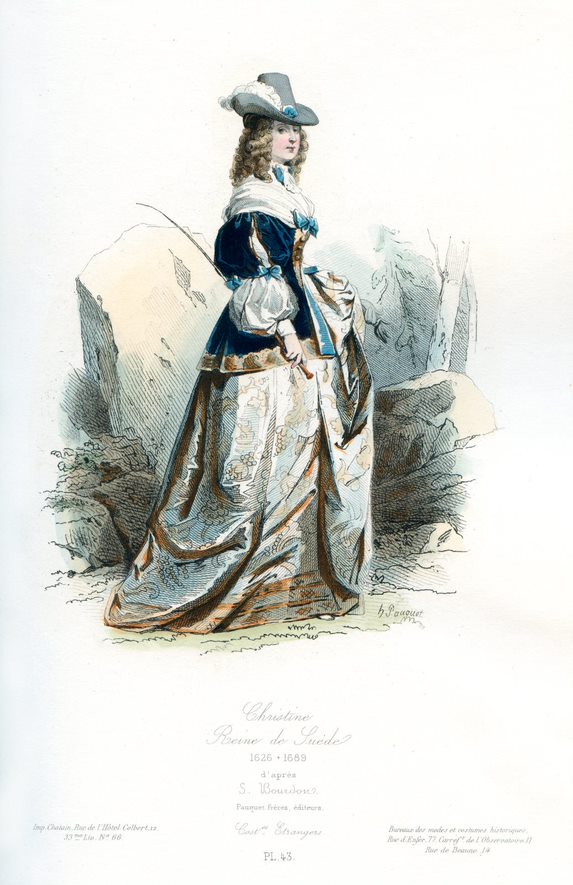
Vintage colored engraving from 1875 showing the costume of Christina Queen of Sweden in the 17th century
Christina was born in 1626: the daughter of Swedish king Gustavus II Adolphus and Maria Eleonora of Brandenburg. She was a longed-for child after her parents suffered the loss of a child and two failed pregnancies. It is recorded that, at her birth, it was believed she was a boy. Upon the revelation that the king and queen had a daughter, her father reportedly remarked, “she is going to be clever, for she has taken us all in.” Her father instructed that she be given an excellent education as though she were a prince, not a princess.
When she was just five years old, Christina ascended as queen when her father died in battle. The grief Christina’s mother, Maria Eleanor, experienced after her husband’s death was deep and prolonged. She was deemed unsuitable to handle matters of state on behalf of her minor daughter as regent; thus, she was given residence elsewhere, leaving Christina’s education and raising to multiple caretakers.
Christina was a devoted student who studied religion, philosophy, and at least seven languages, including Greek and Latin. She so prioritized studying over all else that she often only slept for a few hours a night: forgetting to comb her hair, dressing haphazardly, and wearing men’s shoes for the convenience.
She knew that it was expected of her to marry and produce an heir for Sweden. From a young age, however, she showed no interest in marriage; in fact, she wrote in her autobiography that she had “an insurmountable distaste for marriage” and “for all the things that females talked about and did.” She was intrigued by Catholicism—despite the national faith being Lutheranism—and the concept of celibacy. She read about the “Virgin Queen” Elizabeth I of England and greatly admired her. Her closest female friend was Ebba Sparre; many historians believe she was Christina’s true love. Christina spent most of her spare time with Ebba and wrote letters of love to her even after they were separated later in life.
During her time as queen, Christina’s love for the arts flourished. She acquired many pieces of art and literature for Sweden, and for herself. Though her father had engaged in war and battles, she sent envoys to broker peace in the Thirty Years War. She was a fan of the theatre, and was even an amateur actress herself. She studied other denominations of Christianity, as well as other faiths such as Judaism and Islam. She brought the famous philosopher Rene Descartes to Sweden and received private lessons from him. She blocked the publication of a book that would strictly define Lutheran practice and class all else as heresy. She also founded Ordinari Post Tijdender: the oldest newspaper still in production today.
In 1651, she suffered what has been modernly interpreted as a nervous breakdown after almost 20 years as ruler. Her doctor prescribed holistic care and told her to take more pleasure in her life: suggesting that she work and study less.
Due to her wish to remain unmarried, she wanted her cousin, Charles Gustav, to inherit the throne. In 1654, she abdicated in favor of passing the crown to him, herself. Her abdication ceremony involved removing her regalia piece by piece. When the man supposed to remove her crown made no move to do so, she removed it herself. Dressed in a simple white dress, she gave her farewell speech and Charles was crowned later that day. Christina left Sweden days later.
After many years of interest in Catholicism during her rule of a Lutheran country, she privately converted to Catholicism in 1654. She didn’t immediately disclose her new faith, as Lutheran Sweden would cease funding her. The pope wouldn’t have been able to support her either, as it wasn’t yet known that she was Catholic.
After leaving Sweden for the first time, Christina’s life became nomadic. She traveled through Western Europe: visiting friends and nobles. She often stayed with them, either at their homes or at property they loaned her.
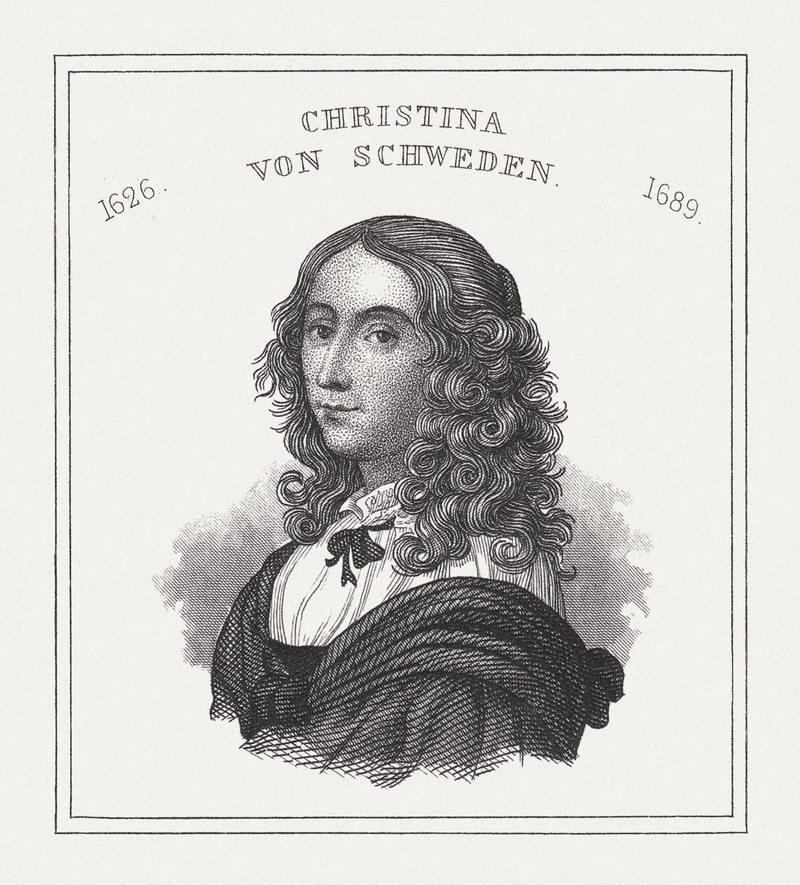
Christina (1626-1689), Queen of Sweden, steel engraving, published in 1843
Deciding to settle in Rome, she set off for Italy with a massive entourage of staff and horses. Her arrival in the city was met with great pomp and circumstance. She was confirmed by the pope and given a wing at the Vatican decorated by Bernini, who had designed the sofa upon which she was carried into the city. He would become a lifelong friend.
Every Wednesday, she would open her palazzo to intellectual guests who would come to discuss the arts and other academic topics. She opened the Academy of Arcadia in 1656 to enjoy music, theatre, and literature. The academy has seen many evolutions over time, but still exists today.
Christina’s social interactions and associations with men as a single woman spurred much gossip. When she visited France, the French society ladies found her to be unladylike in the way that she dressed and the free way in which she spoke.
She returned to Sweden in 1660 after her cousin Charles died. She declared that if his five-year-old heir should die, she should be queen. Her argument was that she had left the throne to Charles and his descendant (singular). However, she would ultimately renounce her claim to the throne once again; Sweden would never allow a Catholic queen.
She recommended herself as the right choice to take the Polish-Lithuanian throne after the abdication of John II Casimir. Despite the pope’s backing, she was unsuccessful.
Upon her return to Rome, she founded the city’s first theatre in a formal jail, Tor di Nana. When Innocent XI became pope, he turned her theatre into a grain store over concerns about theatre’s influence on public morality. He also banned women from singing, acting, and wearing dresses that showed their upper chest. Thinking these restrictions were ridiculous, she let women perform at her palace.
Despite Christina’s decision to abdicate, politics and her rebellious spirit endured throughout her life. When the French king, Louis XIV, abolished the rights of French Huguenots (Protestants), she wrote to the French ambassador in indignation. Her views were not appreciated, but she refused to stay silent. In Rome, she convinced Pope Clement X to ban the tradition of chasing Jews through the streets during carnival. In fact, in 1686, she issued a declaration that all Roman Jews were under her protection.
Christina became ill and died in 1689. She wanted a simple burial, but the pope gave her an elaborate ceremony, burial preparations, and a funeral procession. She was also placed in three coffins: like Catholic popes upon their passing. She is one of only three women to be granted these rites.
Whilst she chose not to live the life of her birthright, Christina followed her passions, her convictions, and her desires. She indulged her intelligence through extensive study and lifelong learning, left a legacy through the arts, and tried to use her influence to promote religious tolerance. A unique woman of her time, Christina was a free spirit who rebelled against others’ expectations of who and what she should be.
Selecting just a small number of women to be featured is always a difficult task, and we encourage you to discuss and share the female figures from history that impress or inspire you!
If you’d like to learn more about some amazing women of history, we recommend the following resources:
- Women You Should Know (website)
- Rebel Girls (podcast)
- Rejected princesses (Instagram account)